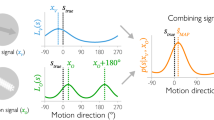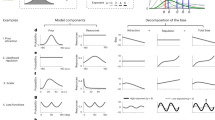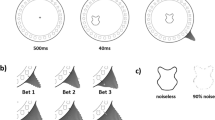Abstract
I SEE the above to-day in NATURE (vol. xxiv. p. 499) as a matter brought before the British Association at York, and as I can forward some results of experience, I beg to send the following:— In the cold season of 1868 I had to cut a straight line through dense forest half a mile long, between two given mounds, and availed myself of the known capability of Asamese in telling direction in such cases. Placing a man on one mound to shout now and then, a party of us went to the other mound and listened. On hearing the shouts I placed a long thin bamboo on the ground pointing from a peg in the direction of the shouts. While the men were clearing a space around I put another small peg in the ground, marking where the point of the bamboo fell. I took the bamboo up, and made the head man relay it himself, which he soon did, almost exactly where I had pegged it; thence we cut a true straight line, setting up peeled rods at every 50 yards, and eventually came out at 24 feet from the mound, in a distance of 45 chains. The jungle was dense, and we could never see more than about 12 or 14 yards in front. Lately having moved to a place where there are five tea-gardens in a semicircle around me, at distances of 5, 6, 4, 41/2, and 41/4 miles distant, I have heard several gongs in the early morning, and taking the bearing of the most audible, plotted it on the Government map, when it came out exactly among the houses in the “station” of the one at 4 miles; a repetition on other mornings confirms the direction. Distance does not seem any drawback, provided the sounds are loud enough; for in the great earthquake of January, 1869, the direction of the loud banging sounds like artillery was carefully marked against a peak in the Naga Hill range. Bearings by the prismatic compass subsequently sent to Calcutta to Dr. H. B. Medlicott, turned out to be within 3° of the true line to Cheduba and Ramree, the active volcanic centre, 550 miles off. I cannot exactly see how the difference of the intensity assists us in directing to the sound. I find I judge that best by facing it and remaining still, and verify the direction best by looking (with the eyes only) about 10° to right, and then 10° to left, which, if I do not move the head, soon enables me to fix by eye the direction pretty close.
This is a preview of subscription content, access via your institution
Access options
Subscribe to this journal
Receive 51 print issues and online access
$199.00 per year
only $3.90 per issue
Buy this article
- Purchase on Springer Link
- Instant access to full article PDF
Prices may be subject to local taxes which are calculated during checkout
Similar content being viewed by others
Author information
Authors and Affiliations
Rights and permissions
About this article
Cite this article
PEAL, S. The Function of the Ears, or the Perception of Direction. Nature 25, 124–125 (1881). https://doi.org/10.1038/025124c0
Issue Date:
DOI: https://doi.org/10.1038/025124c0
Comments
By submitting a comment you agree to abide by our Terms and Community Guidelines. If you find something abusive or that does not comply with our terms or guidelines please flag it as inappropriate.



